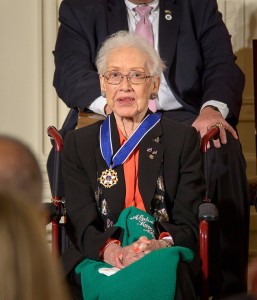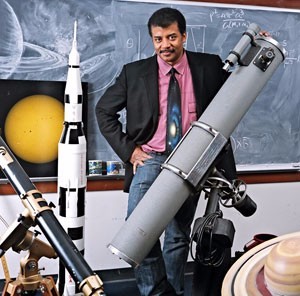Every February marks the annual celebration of Black History Month and we are all reminded of the great work, sacrifices, and triumphs of the phenomenal people that shaped our country. While many of us may know our history quite well, it’s always a good idea to not only brush up, but to also dig a little deeper and maybe learn something new. In honor of that very idea, I will explore some notable people of color who have deeply impacted the world through means of the geek sub-culture. Join me in celebrating these five incredible and inspiring game changers.
Matt Baker: Comic Artist
Born on December 10, 1921 in Forsyth County, North Carolina, Clarence Matthew Baker was destined for success. During World War II, he was denied service due to a serious heart condition and decided to study art at Cooper Union School of Engineering in New York. His artwork quickly captured the attention of the Eisner & Iger Studio. Jerry Iger on Matt:
“He came to my studio in the early ’40s; handsome and nattily dressed, ‘looking for a job’, as he put it. His only sample was a color sketch of—naturally—a beautiful gal! On the strength of that and a nod from my associate editor Ruth Roche, he was hired as a background artist. When given his first script, he showed originality and faithfully executed its story line. His drawing was superb. His women were gorgeous!”
In 1944, his first confirmed pencil and inking work was in Sheena, Queen of the Jungle. He developed a reputation early on as one of the best “Good Girl” artists in the business, a master at drawing the female form. He paid attention to the smaller details that allowed his comic book heroine to come alive as a more robust character. He became the first known African-American comic book artist to find success, and he was fortunate to be at his prime during the Golden Age of comic books. During this Golden Age, Matt also worked with Fiction House, Fox Comics, Quality Comics, and St. John’s Publications.
His most notable works are The Phantom Lady (debuting in issue #13), Lorna Doone, Canteen Kate, and arguably the first ever graphic novel, It Rhymes with Lust. He also did work for various romance comics for St. John’s Publications. His career was proving to be incredibly prolific. Sadly, in 1959, a heart attack claimed his life at the age of only 37. He was inducted into the Will Eisner Comic Book Hall of Fame in 2009, leaving behind a legacy that should prove to be a model for young Black artists following in his path.
For a look at his artwork, click here!
For a full biography by The Comic Book Database, click here!
Katherine Johnson: Mathematician & Physicist
“I counted everything. I counted the steps to the road, the steps up to church, the number of dishes and silverware I washed … anything that could be counted, I did.”
Born on August 26, 1918, Katherine Coleman Johnson (nicknamed “The Human Computer”) is an incredible mathematician and physicist who contributed to The United States’ aeronautics and space programs in the early application of digital electronic computers at NASA. Her technical work with NASA spanned decades as she calculated trajectories, launch windows, and emergency back-up return paths for many of the Project Mercury flights (including early John Glenn and Alan Shepard missions), the Apollo 11 mission to the moon, The Space Shuttle Program, and the calculations for a mission to Mars. Her work was crucial and critical for these missions and their success. Even after NASA began using electronic computers, John Glenn requested that she personally recheck the calculations made by the new electronic computers before his flight aboard Friendship 7 or he would refuse to fly.
In addition to her invaluable brilliance and hard work with NASA, she graduated high school at the age of 14, and was the first African-American woman to desegregate the graduate school at West Virginia University. She has co-authored 26 scientific papers, and her social influence as a pioneer in space science and computing has inspired many other women to enter the field. In 2015, Johnson received the Presidential Medal of Freedom by President Barack Obama for being a pioneering example of African-Amerian women in STEM. She was included in the BBC series 100 Women in 2016.
For a full biography by NASA on Katherine, click here!
Neil deGrasse Tyson: Astrophysicist
“We are part of this universe; we are in this universe, but perhaps more important than both of those facts, is that the universe is in us.”
Born in New York City on October 5, 1958, Neil deGrasse Tyson developed an interest in astronomy at the age of nine after visiting the Hayden Planetarium. In high school, Neil attended astronomy classes offered by the Hayden Planetarium which he says was “the most formative period” of his life. Throughout his teen years, he obsessively studied astronomy, and by the age of fifteen began to gain a bit of fame in the astronomy community for his lectures. Carl Sagan definitely took notice and wanted to recruit Neil to Cornell for undergraduate studies. Instead, Neil chose Harvard where he majored in physics and focused his research on observations in cosmology, stellar evolution, galactic astronomy, bulges, and stellar formation.
Neil finally came full circle in 1994 when he joined the Hayden Planetarium as a staff scientist, became acting director in 1995, and appointed director in 1996.
“When I was a kid… there were scientists and educators on the staff at the Hayden Planetarium… who invested their time and energy in my enlightenment… and I’ve never forgotten that. And to end up back there as its director, I feel this deep sense of duty, that I serve in the same capacity for people who come through the facility today, that others served for me”.
He has since held numerous positions at institutions including the University of Maryland, Princeton University, the American Museum of Natural History, and the Hayden Planetarium and has written a number of popular books on astronomy. He is also well known for his work on Cosmos: A Spacetime Odyssey and for being an “accessory” demotion of Pluto as a planet.
For a full biography by the Hayden Planetarium, click here!
Follow Neil on Twitter!
Oscar Michaeux: Filmmaker & Author
“There is no barrier to success which diligence and perseverance cannot hurdle.”
On January 2, 1884, Oscar Michaeux was born on a farm in Metropolis, Illinois. Being the fifth child out of thirteen combined with the quaintness of farm life caused Oscar to disconnect from his family and rebel. Growing weary of Oscar’s attitude, his father sent him to the city to work in marketing. This was the perfect job and environment for Oscar as he loved speaking to new people and learned invaluable social skills that would later aid him in developing characters and stories. Beginning at the age of 17, Oscar ran the gamut of various jobs including stockyards and steel mills. Disliking being employed by self-serving and greedy men, Oscar decided to become his own boss as a shoe shiner in a white barbershop in the suburbs of Chicago. Just as before, he became bored with this life and decided to work as a Pullman porter for a major railway. This enabled him to travel through most of the United States, meet wide array of unique people, save a few thousand dollars, and make extremely important connections with the wealthy.
He finally decided to become a homesteader in Dallas, South Dakota, which inspired the works of his first novels and films. While learning more about human relations and farming, he began writing articles for the local press, The Chicago Defender. These works eventually inspired him to fully devote his time to writing and, eventually, film-making. He wrote seven novels, the first being The Conquest: The Story of a Negro Homesteader, which sold 1,000 copies. The theme is considered ahead of its time as it focused on African Americans realizing their potential and succeeding in areas where they felt they could not. One of Oscar’s fundamental beliefs is that hard work and enterprise will make any person rise to respect and prominence, no matter his or her race.
In 1918, he adapted his first novel into a film re-titles The Homesteader, making him the first African American film maker. Unlike his novel, the film focuses almost exclusively on romance and extensively with race relationships between blacks and whites. His impressive film career produced 44 films between 1918 and 1948.
For a full biography and filmography by IMDB, click here!
To see the full film, At Our Gates on YouTube, click here!
Jerry Lawson: Game Designer
“I’m one of the guys, if you tell me I can’t do something, I’ll turn around and do it.”
Born in Queens, New York on December 1, 1940, Lawson lived a childhood obsessed with many scientific interests including chemistry and ham radio. As a teenager, he made some extra cash by repairing television sets. His knack for the technological would forever change the way we play video games. In 1970, he began working for Fairchild Semiconductor in San Francisco as an applications engineer. During his free time in his garage, Lawson created the arcade game, Demolition Derby. By the mid-1970’s, he graduated to Chief Hardware Engineer and Director of Engineering for the video game division of Fairchild. Most games at this time used ROM storage soldered onto the game hardware. Lawson and his crew figured out how to remove the ROM to a cartridge that could be inserted and removed from a console unit repeatedly, without causing electrical shock to the user. This was monumental for the gaming industry as it would allow players to buy libraries of games and provided a fantastic avenue for revenue for gaming companies. While the console Lawson was developing was not successful, the cartridge idea was and picked up by other console manufacturers, popularized by the Atari 2600 in 1977. This made him the inventor of the modern gaming console, and the first African American to do so. During his time at Fairchild, Lawson and his colleague, Ron Jones, were the sole black members of Homebrew Computer Club. This group of early computer hobbyists includes legends such as Steve Jobs and Steve Wozniak.
Lawson left Fairchild in 1980 to found Videosoft, a video game development company which created software for the Atari 2600 in the 1980’s, closing about five years later. After Videosoft, Lawson began independent consulting on a wide variety of projects, and began a mentor program at Stanford. In 2011, he was honored as an industry pioneer for his work on the game cartridge by the International Game Developers Association.
For a full biography from Bio, click here!






